
Matrox to Use AMD GPUs in Their Next Generation Multi-Display Graphics Cards
If you go back far enough in the computer industry, there have been many successful video card companies. Back before the whole 3D craze kicked off, some of the fastest 2D video cards came courtesy of Matrox, and while they made some attempts at producing compelling 3D graphics cards, they were never able to grab the performance crown from NVIDIA or ATI. Their last real attempt at the 3D graphics market came in 2002 with the Parhelia-512, and as was the case with previous efforts it basically ended up falling short. Interestingly, the Parhelia-512 supported "surround gaming" long before AMD's Eyefinity, and that may have opened the gates for what would become Matrox's core focus over the next decade: multi-display video cards.
Since 2002, there haven't been many reviews of Matrox cards because the focus shifted to industries that need not just two or three but potentially a dozen or more displays all running from a single system. Their last graphics card update was in 2009, and since then the top product has been the M9188, a single card capable of driving eight DisplayPort or DVI connections, with the possibility of using two cards to drive 16 displays. Who needs that many displays? Well, the financial and security markets are two easy examples, as they both have use cases where six or more displays is "reasonable", and digital signage is another category where Matrox can provide useful technology. These are all professional markets, and the M9188 is priced accordingly ($1500+), but if you were looking to build a system with good graphics performance, Matrox basically hasn't been relevant as their cards seem to focus almost exclusively on 2D performance these days.
That might be changing with future products given today's announcement, as Matrox will be switching to AMD-designed GPUs for their next generation of multi-display products. These will continue to support Matrox's PowerDesk desktop management software, but what's not clear is whether Matrox will be doing much in the way of customized hardware. The announcement states that "key features of the selected AMD GPU include 28nm technology with 1.5 billion transistors; DirectX 11.2, OpenGL 4.4 and OpenCL 1.2 compatibility; shader model 5.0; PCI Express 3.0 and 128-bit memory interface."
From that we can surmise that Matrox will be using a variant of the Cape Verde GCN core, which is one of the lower performance GCN parts from AMD. In fact, Matrox may actually be using AMD's FirePro W600 cards, only with custom Matrox-developed software applications. This would also mean Matrox is looking at a maximum of six display outputs per graphics card (compared to eight on the M9188), but AMD already has the ability to run up to six GPUs in a system with the appropriate motherboard meaning up to 36 displays off a single system is theoretically possible.
The hardware is of course only part of the equation, and Matrox's PowerDesk software is something that benefits many businesses and professionals. Matrox notes that "critical productivity-enhancing features available with Matrox PowerDesk software will continue to be supported on the next line of Matrox graphics cards designed with AMD GPUs." These features include the ability to configure and manage multi-display setups, which can get tricky once you move past two or three displays. PowerDesk has tools to configure stretching, cloning, pivot, bezel management, and other items that are important for a professional multi-display configuration.
There are plenty of upsides to this announcement. For one, it allows Matrox to reallocate resources that are currently going into hardware development and instead focus on their core competency, which at this point is multi-display solutions. PowerDesk is well regarded in their target market, and this will allow Matrox to continue to improve the platform without trying to design their own hardware. AMD benefits as they're able to partner with Matrox and potentially sell their GPUs at higher "professional" prices, and they may also increase their share of digital signage and other multi-display markets.
And of course the customers that purchase the cards benefit as they get to move to a modern platform with support for all the latest DirectX, OpenGL, and OpenCL libraries. Long-term, this also opens the doors for Matrox to offer substantially higher performance 3D solutions from AMD for customers that need such features. Overall, this announcement isn't likely to affect most computer users, but it's good to see Matrox still hanging around after several decades in the computer graphics industry, something many of their competition from the 90s didn't manage to achieve.
Read More ...
IFA 2014 Lenovo Announcements - Android Tablet, Gaming Laptop, Gaming Desktop
The world’s largest PC maker arrived at the IFA trade show in Berlin with quite a few new products. Today Lenovo announced an 8” tablet, a 17” gaming laptop, and a gaming desktop PC.
Lenovo Devices |
|||
TAB S8 |
Y70 Touch |
ERAZER X315 |
|
Form Factor |
8" 1920x1200 IPS Touchscreen Tablet |
17.3" 1920x1080 Touchscreen Laptop |
Desktop |
CPU |
Intel Atom Z3745 (1.86 GHz quad-core) |
up to Haswell Core i7 quad-core |
AMD Kaveri A8-7600 (3.1GHz quad-core) AMD Kaveri A10-7850K (3.7GHz quad-core) |
Memory |
2GB LPDDR3 |
Up to 16GB DDR3L |
A8: 8GB DDR3 A10: 12GB DDR3 |
Graphics |
Intel HD Graphics |
Up to NVIDIA GTX-860M 4 GB VRAM |
A8: AMD Radeon R9 255 2 GB VRAM A10: AMD Radeon R9 260 2 GB VRAM |
Storage |
16 GB eMMC |
Up to 1 TB + 8 GB SSHD or 512 GB SSD |
A8: 1 TB + 8 GB SSHD A10: 2 TB + 8 GB SSHD |
Connectivity |
Wi-Fi 802.11 b/g/n; BT 4.0; Optional LTE |
Optional BT4.0; 802.11ac/bgn Wi-Fi; 1G LAN |
1G LAN, 802.11ac Wi-Fi |
Dimensions |
209.8 x 123.8 x 7.9 mm 8.1 x 4.8 x 0.31 inches |
422.9 x 190.6 x 25.9 mm 16.6 x 11.4 x 1.1 inches |
375.9 x 360.7 x 175.3 mm 14.8 x 14.2 x 6.9 inches |
Weight |
299 g 0.65 lbs |
3.4 kg 7.5 lbs |
7.48 kg 16.5 lbs |
Moving from the 299 gram (0.65 lb) tablet, we hit the other end of the spectrum with the 3.4 kilogram (7.5 lb) Y70 Touch gaming laptop. This is the first gaming laptop from Lenovo to be offered with a 17” screen size – in this case a 17.3” 1920x1080 touchscreen. This behemoth of a laptop is powered by up to a Core i7 quad-core processor, has up to 16 GB of DDR3L, and can be equipped with a NVIDIA GTX-860M GPU with 4 GB of dedicated memory. Storage options are up to 512 GB Solid State Drive (SSD), or up to a 1 TB Solid State Hybrid Drive (SSHD) which has 8 GB of SSD cache. Audio on the laptop should be a highlight feature, with JBL stereo speakers and an integrated 3.0 watt subwoofer built in. Wireless options are 802.11ac, and a gigabit Ethernet connection is also included. Battery life is rated for only 5 hours, but with a curb weight this high, this is not the kind of machine you would take and use on the go anyway. The only optical disc option is an optional external DVD/Blu-ray drive. A backlit keyboard with red lighting completes the experience. The Y70 Touch will be available in October with a starting price of $1299.
The final announcement today is the ERAZER X315, which Lenovo considers an affordable gaming desktop. With a starting price of $599, they could be right. Lenovo went with the AMD Kaveri for the X315 series, with choices of the A8-7600 (3.1 GHz quad-core) or A10-7859K (3.7 GHz quad-core) APUs. Memory is up to 8 GB for the A8 version, and 12 GB for the A10, and GPU options are the AMD Radeon R9 255 with 2 GB of memory for the A8, or an R9 260 with 2 GB memory for the A10. Storage options are both SSHD drives, with 1 TB for the A8 and 2 TB for the A10. This desktop also includes four USB 3.0 ports (with one always powered), two USB 2.0 ports, HDMI input, and wireless connectivity with 802.11ac supported in addition to the Ethernet port. The case includes front lighting and a “knight’s armor” design. The ERAZER X315 will be available in November.
Lenovo has announced three devices aimed at three completely different markets. The tablet looks to have a great display for the $199 price. A 17” laptop with a 1080p display seems like a low resolution offering for this day and age, but for a gaming device it makes sense with the amount of GPU power available in a mobile device. The desktop looks to be a decent gaming machine for a starting price of $599, but we will have to wait for a review to know for sure.
Read More ...
ASUS EeeBook X205: The $199 Windows Alternative to Chromebooks
When ASUS introduced the first EeePC back in 2007, it became a huge hit and essentially ushered in the era of the netbook. Using Linux as the core OS and sporting low-end hardware in order to target a price of $200 (though it ended up shipping at $300 initially), the ultraportables world was forever changed. Google essentially revised and reinvigorated the netbook market with their Chromebook initiative, which brought us $200 laptops in 2011 that again used an alternative OS. Considering the $200 Chromebooks have been one of the highest volume laptops for the past year or two, others are looking to get a piece of that market. Now ASUS is teaming up with Microsoft to release a Windows 8.1 with Bing laptop that hopes to steal some of the thunder from budget Chromebooks.
As you'd expect from any full laptop selling for $200, the components are going to be relatively low-end. ASUS is using an 11.6" 1366x768 LCD – and no, it is not a touchscreen – the first sign of compromise. The processor comes courtesy of Intel's quad-core Atom platform (Bay Trail), and the X205 will ship with 2GB RAM and 32GB onboard storage (plus two years free of 500GB ASUS WebStorage). It also features two USB 2.0 ports, 802.11n WiFi, micro-HDMI, and microSD support. There will also be a version with 64GB of storage at a slightly higher price point. In other words, this is sort of like what would happen if you took a basic tablet and converted it back into a laptop, and then used Windows 8.1 instead of Android.
The overall quality of any $200 laptop is obviously going to be a concern, as that price point is far below what we usually see for Windows laptops. For those that want a higher performance computing device, this is obviously not going to fit their needs, but Windows 8.1 has taken steps to improving performance on low memory devices, and you still get a full keyboard and presumably decent battery life. You also get full compatibility with the existing library of Windows applications, which is going to be the real selling point. Is the market still interested in such a device, or have most people moved on to tablets and Chromebooks? We'll find out how well the X205 does at retail in the coming months.
Read More ...
ASUS' Zenbook UX305: Core M and QHD+
Today at IFA ASUS announced a couple of new laptops. The first continues the refinement of the Zenbook line with an update geared around Intel's Core M line of processors. Andrei is at IFA Berlin and can hopefully provide some hands-on impressions later, but the design language looks similar to the existing 13.3" Zenbook. The big news outside of the Core M processor is that the display has been upgraded yet again, this time to a 3200x1800 QHD+ panel. Other aspects include three USB 3.0 ports, an SD card reader, micro-HDMI, and 802.11ac WiFi connectivity.
We'll have more information on the Core M processors as well coming next week at IDF, but in the meantime it's interesting to note that ASUS has made the switch from the U-series line of Intel CPUs to what is effectively the Y-series Broadwell replacement. This is even more surprising as the UX301 shipped with the Core i7-4558U, which was a 28W CPU with a GT3-based Iris Graphics 5100 GPU. What we know of Core M suggests that the TDP has been cut way down, and the UX305 may actually be fanless, though it's likely Intel will have configurable TDP support as well. In any case, we may very well see a regression in performance from the UX301 to the UX305, though battery life should improve in the process.
Pricing and availability on the UX305 has not been announced, but there should be 128GB and 256GB SSD models, and likely multiple CPU SKUs. We'd expect the price to be similar to the existing UX301 – i.e. $1500+, depending on model – but the switch to Core M may result in prices being closer to $1000. For students and businesses that need highly portable laptops, the UX305 may be exactly what they want.
Read More ...
Seasonic Platinum SS-1050XP3 & SS-1200XP3 Power Supply Review
Very powerful PSUs may not be all that useful to most users, but they certainly are the pride of any company. Today we're looking at the new pinnacle of Seasonic's retail PSUs, the Platinum XP3 series, products designed with very advanced users and cryptocurrency miners in mind. Their advertised performance seems amazing, especially when combined with their reasonable retail price. How well can they perform though? We will find out in this review.
Read More ...
ASUS Unveils the ZenWatch at IFA
Today ASUS threw their hat in the ring of Android Wear smartwatches with their new ASUS ZenWatch. All of the Android Wear watches sport a common hardware platform and the ZenWatch is no exception. It sports a 1.63" curved 320x320 AMOLED display, and is powered by a Qualcomm Snapdragon 400 quad Cortex-A7 part running at 1.2GHz, paired with an Adreno 305 and 512MB of RAM plus 4GB of NAND. ASUS claims that the internal 1.4Wh battery will get a user through the day, and the IP55 rating for dust and water resistance should resist environmental hazards but not to the extent of other smartwatches like the Sony SmartWatch 3.
Android Wear watches typically have to compete on price or on design and build, and it looks like the ZenWatch has chosen to go with the latter. The stainless steel design with the curved cover glass and leather strap all convey a more premium feel than other plastic smartwatches. Of course, this also means that the ZenWatch is priced as one of the more expensive smartwatch options at 199 euros. ASUS expects that the ZenWatch will be put on sale sometime during the second half of 2014.
Source: ASUS via The Verge
Read More ...
Toshiba announces new Chromebook 2 line
Expanding its Chromebook lineup, Toshiba is updating its original model by releasing the Chromebook 2. During my time with the device the most immediate difference on this new model is the display, as it now offers some very good colours and viewing angles. Toshiba now provides a 1080p IPS screen on the higher end model that is worlds apart from the screen used in their original Chromebook. Toshiba is planning to also offer a 720p matte screen display in a lower end edition, but this wasn't on display.
The specs are pretty modest; the Chromebook 2 comes with an Intel Celeron Bay-Trail processor which according to Toshiba may be subject to change due to device's later release date, so the exact model number was not provided. This creates a bit of anbiguity on how performant the final hardware will be. Main memory comes in at 4GB DDR3L at 1600MHz for the 1080p model, or 2GB for the 720p model. Toshiba advertises 11.5h and 9h usage times for the low end and high end model on a non-replaceable battery.
Connectivity is provided by 1x HDMI-out, 1x USB 2.0, 1x USB 3.0 (including Sleep-and-Charge), SD/SDHC slot, headphone/mic combo jack connectors, and a Kensington security lock. The device sports 801.11ac+agn WiFi capabilities with BT 4.0 and a HD webcam with dual microphones.
There was a noticeable lack of visible speakers anywhere on the device and that's because they were built-in into the device. The sound was quite acceptable for laptop speakers and plenty loud.
The Chromebook 2 isn't scheduled to be available until in Q1 2015 in Europe. While again Toshiba didn't comment on the price, I expect something similar to the current models which hover around 300€.
Read More ...
Sony Announces the SmartWatch 3 and SmartBand Talk at IFA
Sony is no stranger to wearable devices. But today they are launching their first device that runs Google's Android Wear operating system. The first is the Smartwatch 3, pictured on the left above. The SmartWatch 3 is similar to the other Android Wear devices launched by other manufacturers. It sports a 1.6" 320x320 LCD display, and is powered by Qualcomm's APQ8026 quad Cortex-A7 part running at 1.2GHz, paired with an Adreno 305 and 512MB of RAM plus 4GB of NAND. The SmartWatch 3 is IP68 rated for submersion in water up to 2 meter deep for 30 minutes. The 420mAh battery is also slightly larger than competing watches like LG's G Watch which is 400mAh.
My concern is that the SmartWatch 3 doesn't really bring anything spectacular compared to competing devices and doesn't have the visual appeal or design of watches like the LG G Watch R. Pricing has yet to be announced but hopefully the SmartWatch 3 is price competitive.
The second announced device is the SmartBand Talk. It's more like some of the fitness bands that we've seen launched, with a 1.4" e-paper display at 192dpi that integrates into the band itself. Sony hasn't given any specifics about what's inside the SmartBand Talk, but they have said that it will have an integrated speaker and mic for voice calls when paired with a smartphone. It's not clear if the SmartBand Talk is also powered by Android Wear.
The SmartWatch 3 will be available in black and green, while the SmartBand Talk will come in black and white. Both devices are slated to launch in the fall, and pricing is currently unknown.
Read More ...
NVIDIA Announces GAME24 - 24 Hour Live Gaming Celebration
It seems company sponsored live events are becoming more popular. Not long after AMD hosted their own gaming celebration, NVIDIA is upping the ante with a 24 hour live streamed event with several physical locations around the world, which they're calling GAME24.
NVIDIA describes GAME24 as a celebration of gaming, and several gaming studios will also be involved in the event. However, NVIDIA has not yet announced the studio names. GAME24 will feature eSports competitions, record-breaking gaming stunt competitions, exclusive game demos, prizes, and developer interviews. And of course, along with a focus on gaming products and partnerships, there will be a significant amount of actual gaming taking place both remotely and in-person.
The event will take place starrting 6 PM PST on Thursday, September 18th, and it will last until the same time the next day. Streaming will be provided from start to finish via Twitch. To attend the event, register at http://www.game24.nvidia.com/. Attendance and registration are free. Registration ends at 5 PM PDT the day of the event but NVIDIA warns seats are limited, so it's first come first served.
Confirmed locations include:
Los Angeles: Hangar 8, 3021 Airport Avenue, Santa Monica, California. 18 and up only.
Chicago: Ignite Gaming Lounge, 3341 N. Elston Ave., Chicago, Illinois.
Indianapolis: eBash Indianapolis Video Game Center, 6609 East 82nd St., Indianapolis, Indiana.
Mission Viejo, California: 27741 Crown Valley Pkwy, Ste. 223, Mission Viejo, California.
London: Location TBA
Shanghai: Location TBA
Stockhom: Location TBA
Source: NVIDIA
Read More ...
Samsung Announces Gear VR: A VR Harness For Your Note 4
Alongside today’s announcement of the Galaxy Note 4, Samsung also used the occasion to announce that they intend to break into the nascent VR headset market with their own device. Dubbed the Gear VR, Samsung is making a very different and very smartphone-centric take on the VR headset concept. For that reason the fact that this device was announced at the same time as the Note 4 was no mistake or even a convenience. Instead the Gear VR is functionally a peripheral for the Note 4; the Note 4 itself is the heart of the device, and the Gear VR is the harness to utilize the Note 4 as a VR headset.
The idea of using a phone or phablet as the basis of a VR headset is not new, but Samsung’s Gear VR project is the most serious and complete implementation of the idea yet. Gear VR follows up on Google’s Cardboard VR concept, replacing the hacked together DIY construction with a retail grade manufactured harness. Otherwise the idea is similar in execution: phones and phablets already have the screens, sensors, and gyroscopes necessary to build a basic VR headset, so why not? And the Note 4 in turn is the newest and most advanced of these devices.
Meanwhile Samsung for their part already has an interest in VR headsets and a business relationship to help make it a reality. Samsung is the manufacturer behind the display used in the Oculus Rift DK2, which uses the 1080p SAMOLED screen from the Note 3. With Samsung already involved in VR headset manufacturing, it’s only a slight extension on their part to take advantage of their in-house technology to go it alone and build their own headset out of the newer Note 4 hardware. As Samsung Display Corp. seems to only be willing to provide the latest and greatest SAMOLED panels to Samsung Mobile, there is potential to ship a VR display more compelling than anything else on the market.
So how does the Gear VR work? With the Note 4 proving the heart of the device – the display, the processing, and the sensors – the Gear VR harness itself provides the mechanism to hold the phone in place, including the lenses necessary to focus on the Note 4 at such a close distance and to adjust that focus. However the Gear VR is also an I/O device of its own to allow access to the Note 4, since the phablet and its touchscreen are inaccessible while it’s locked into the harness.
Utilizing the micro-USB connection at the bottom of the Note 4, the Gear VR grants the combined setup a small touchpad and a back button to allow basic operation and navigation, along with additional controls for volume (note that audio either comes from the Note 4 or an external headset, the harness has no speakers of its own). This setup isn’t a full replacement for the Note 4’s buttons and touchscreen, but it’s meant to offer a basic interface that’s used in conjunction with pointing-by-viewing to allow simple controller-free operation of the headset. It’s also worth noting that the harness doesn’t have a power source of its own, so it’s drawing from the Note 4’s own power supply.
Meanwhile one thing that is important to note is that unlike other VR headsets such as the Oculus Rift and Sony’s Project Morpheus, the combined Gear VR headset is designed to be a stand-alone device. It’s not merely a display and I/O interface for an external game console or PC, but as in the Google Cardboard concept is a complete and self-contained device.
This is an important distinction because it sets a baseline for what kind of content Samsung can reasonably offer and support on the headset. The Note 4 is a modern and high performance phablet, but at the end of the day it’s powered by an SoC-class GPU that offers a fraction of the performance of a game console or PC. Which is not to say that you can’t game on it, but given the hardware it’s clear that Samsung is not in direct conflict with Oculus VR or Sony for the hardcore gaming market.
Consequently the bulk of Samsung’s demos were focused on panoramic 3D video playback, which is a low intensity task that the Note 4 isn’t challenged by. In this case the headset can be used to look around the panorama, making it seem as if the viewer is in the middle of the action. Along with the panoramic videos, Samsung also had an Iron Man themed demo to showcase the device’s interactivity potential, using the Gear VR setup to look around a mockup of Tony Stark’s lab and to activate certain gimmicks and informational displays. Finally a simple space sim dubbed Escape Velocity was present to demonstrate the gaming possibilities for the device, though gameplay was limited to looking and shooting due in part to the limits imposed by the hardware and I/O options. In the longer term all of these are closer to technical demos than complete products, so Samsung will need Android developers to embrace the Gear VR setup if they wish to round up a good collection of content.
Meanwhile the hardware itself was solid. In our brief look at the demo units it’s impractical to do a proper side-by-side comparison with any other VR headsets, but Samsung has put together a solid piece of kit. The adjustable headstraps offer enough range to fit most heads – even my own (if just barely) – and the adjustable focus means just about anyone with good vision should be able to make the headset work. However, correction seems to be limited to around -3.5 diopters for those that are near-sighted. In addition, no correction is possible for those with astigmatism. The headset also does not accommodate for glasses.
Elsewhere the inputs live up to their stated goals of providing limited I/O for the Gear VR, though I did manage to accidentally hit the back button more than once. Overall the Note 4 gives the overall setup some heft, but not enough to make the setup heavy or uncomfortable, at least for short periods of use.
Which on that note, Samsung is suggesting a 30/15 rule for the device: 30 minutes of use, followed by a 15 minute break. This limited playing window avoids any concerns about extended use of VR headsets while also bypassing any battery life concerns since the Note 4 needs to power every aspect of the combined setup.
Otherwise the star of the Gear VR is the Note 4’s display, which is currently unparalleled among SAMOLED displays. At 2560x1440 pixels (Quad HD) and with the rapid response time of OLED, the Note 4’s display is a natural fit for a VR headset. With the Note 4 packing a 5.7” screen, the pixel density on the Note 4’s panel works out to roughly 515 PPI, one of the highest pixel densities yet and a good fit for an application that is so density-sensitive. However this is complicated by the now typical use of a pentile subpixel arrangement in a Samsung OLED display. The 515 PPI density makes the pixels harder than ever to see, but they are still visible and the subpixel layout exacerbates this to some degree. Based on our experience this may very well be better than any other VR headset display so far, but the holy grail for VR headsets may be a 4K display in similar dimensions.
Meanwhile it’s interesting to note that while this is a Samsung device it is being promoted as a product of a “deep technical partnership” with Oculus VR. The press release Samsung will be sending out with today’s announcement even specifically notes that the Gear VR is “powered by Oculus technology”. Unfortunately Samsung isn’t going into any real detail on what that partnership entails at this time. Since Samsung is building all of the hardware, the most likely collaboration is on the software and/or the optics. Though in either case any presence that Oculus VR has in the development of the Gear VR is not immediately obvious when you use it.
Wrapping things up, in the longer term we do have some concerns about the viability of the Gear VR compared to other VR headsets, but with the modern incarnation of the VR headset industry so new, these are questions that only development time and consumer adoption can answer. Which is also why Samsung is wisely approaching this in an Oculus Rift-like manner by pitching this first iteration of Gear VR at early adopters under the product title "Samsung Gear VR Innovator Edition." The difference is somewhat semantic – Samsung and even certain carriers will be selling the Gear VR harness to anyone that wants it – but Samsung does make it clear that they’re not shooting for wide consumer adoption quite yet.
On the hardware side, one of the biggest technical questions that Gear VR raises is whether the sensor suite on a smartphone is really good enough for this line of use. Oculus VR for their part has been focusing on very low input latency as a major component of VR headsets, for example. And even though this is an early adopter product this is something Samsung has paid more attention to than we would have expected. Samsung is specifically listing the device's "Motion to Photon" latency in their product specifications, which for the Gear VR is stated to be less than 20ms. 20ms is a particularly important threshold for VR headset latency, since among other things this is the maximum amount of latency that John Carmack has stated he feels is acceptable.
Meanwhile on the consumer side there’s the question of consumer interest. Does a Note 4 converted into a VR headset offer enough functionality to satisfy consumers? Gaming still seems like the killer app for VR headsets, and that’s the area where an SoC-powered device like the Gear VR is going to be the most handicapped.
For the answer to these questions and more, we’ll have to see what happens with the Gear VR once the Innovator Edition begins shipping. Like the Note 4 itself, Samsung isn’t committing to a date or a price at this time, but their best estimate for a launch date for the Gear VR is this fall with a price to be determined.
Read More ...
Samsung Announces Galaxy Note Edge: Hands On
Following on the heels of the Galaxy Note 4, Samsung is also announcing a new product named the Galaxy Note Edge. In terms of basic hardware, not much changes. Same fingerprint sensor, same SoC, same RAM, camera, battery, etc. The one fundamental difference is that the display has a curved edge similar to the patent depictions. Samsung is pushing this as a secondary display of sorts that allows for more information to be shown along the curved edge without disrupting the rest of the content on the display. This is done by extending the display by an extra 160 pixels in width. I've included a spec sheet below to show the rest of the differences between the Note 4 and Note Edge.
Samsung Galaxy Note Edge |
Samsung Galaxy Note 4 |
|
SoC |
2.7 GHz Snapdragon 805 |
2.7 GHz Snapdragon 805 |
RAM/NAND |
3 GB LPDDR3, 32/64GB NAND + microSD |
3GB LPDDR3, 32GB NAND + microSD |
Display |
5.6” 1440p+160 Super AMOLED |
5.7” 1440p Super AMOLED |
Network |
2G / 3G / 4G LTE (Qualcomm MDM9x35 IP block UE Category 6 LTE) |
2G / 3G / 4G LTE (Qualcomm MDM9x35 UE Category 6 LTE) |
Dimensions |
151.3 x 82.4 x 8.3mm, 174 grams |
153.5 x 78.6 x 8.5 mm, 176 grams |
Camera |
16MP Rear Facing w/ OIS, 1/2.6" CMOS size (Sony IMX240), F/2.0, 3.7MP FFC w/ F/1.9 aperture |
16MP Rear Facing w/ OIS, 1/2.6" CMOS size (Sony IMX240), F/2.0, 3.7MP FFC w/ F/1.9 aperture |
Battery |
3000 mAh, 3.85V, 11.55 Whr |
3220 mAh, 3.85V, 12.397 Whr |
OS |
Android 4.4.4 with TouchWiz UX |
Android 4.4.4 with TouchWiz UX |
Connectivity |
802.11a/b/g/n/ac + BT 4.1, USB2.0, GPS/GNSS, MHL, DLNA, NFC |
802.11a/b/g/n/ac + BT 4.1, USB2.0, GPS/GNSS, MHL, DLNA, NFC |
SIM Size |
MicroSIM |
MicroSIM |
While I'm normally not too stringent on top-mounted power buttons, this move felt like a major step back for ergonomics. While it's going to take a full review to really know whether this is a problem or not, my first impression was that this would make it harder to recommend the Note Edge over the Note 4. However, there are a few things that Samsung got right with this phone. For one, palm rejection is incredibly well-implemented. Even though I had my palm solidly on top of the display, I didn't see any touch events occur. The side with the curved display also feels incredibly thin, and seems to disguise the actual thickness of the device.
In practice, the display doesn't really seem to have much area, and tapping shortcuts and other objects on the sidebar tends to require a bit more precision than what I'm used to. For the most part, the use cases are largely similar to what we saw in the Continuum as well. Live news feeds were one possible use case, along with Twitter feeds and Facebook status updates. The other uses that were available included placing camera controls on the curved area to make the viewfinder larger, notifications while watching movies, and some quick tools such as a flashlight or ruler. The curved edge can also serve as an alarm clock. Overall I found it hard to see any particular killer app, but it may be useful to some. To me, the Note Edge doesn't really seem better than the Note 4, just different.
The Samsung Galaxy Note Edge will be available later this fall on AT&T, T-Mobile, Sprint, and Verizon. It will come in either Charcoal Black or Frost White in other select markets.
Read More ...
Samsung Announces Galaxy Note 4: Hands On
By now, most people seem to have accepted the concept of a phablet. At first, I was also skeptical, as I wanted a phone that could easily be used with one hand. However, with time I've really come to appreciate the value that comes with the larger display size and S-Pen/Wacom stylus. Simply put, even though the larger size precludes the possibility of easily using the phone with one hand, the increased multitasking capabilities and improved media experience can be well worth the trade-off. While I also find unfortunate that Android OEMs seem to believe that every phone should be a phablet, it’s hard to ignore the incredible success that Samsung continues to have with the Galaxy Note phablets. It’s also increasingly difficult to nail down just what a phablet is. I still firmly believe that a smartphone should be easy to use with one hand, and a phablet requires two. However, the distinction between phablet and tablet is a matter of whether the device can be easily carried in a pocket. Of course, none of that really gives a firm, clear answer. After all, everyone is different, and differences in hand size and thumb length determine what those limits are.
At any rate, this takes us to the Galaxy Note 4. Surprisingly, Samsung has stopped their march of ever-increasing display size for the Note phablets. The Galaxy Note 4 has a 5.7” AMOLED display, with QHD/1440p resolution. This comes out to 515 PPI, which should be high enough for general smartphone usage but in my experience with the Gear VR it isn’t enough for VR usage, which holds the display as close as possible to the eye. Samsung also disclosed that they have a 2.7 GHz quad-core processor for some variants, which points squarely towards Snapdragon 805 for the US. There’s also a 1.9/1.3 GHz octa-core version, which should be an Exynos 5433 SoC. For those that have spent any amount of time following Samsung Systems LSI’s SoC nomenclature, it should be patently obvious that there are four Cortex A15s on the big cluster and four Cortex A7s on the little cluster. I’ve included a spec table below to get a better idea of how things stand.
Samsung Galaxy Note 3 |
Samsung Galaxy Note 4 |
|
SoC |
2.26 GHz Snapdragon 800 |
2.7 GHz Snapdragon 805 |
RAM/NAND |
3 GB LPDDR3, 32/64GB NAND + microSD |
3GB LPDDR3, 32GB NAND + microSD |
Display |
5.7” 1080p Super AMOLED |
5.7” 1440p Super AMOLED |
Network |
2G / 3G / 4G LTE (Qualcomm MDM9x25 IP block UE Category 4 LTE) |
2G / 3G / 4G LTE (Qualcomm MDM9x35 UE Category 6 LTE) |
Dimensions |
151.2 x 79.2 x 8.3mm, 168 grams |
153.5 x 78.6 x 8.5 mm, 176 grams |
Camera |
13MP Rear Facing, 1/3.06" CMOS size (Sony IMX135), 2.1MP FFC |
16MP Rear Facing w/ OIS, 1/2.6" CMOS size (Sony IMX240), F/2.0, 3.7MP FFC w/ F/1.9 aperture |
Battery |
3200 mAh, 3.8V, 12.1 Whr |
3220 mAh, 3.85V, 12.397 Whr |
OS |
Android 4.4.2 with TouchWiz UX |
Android 4.4.4 with TouchWiz UX |
Connectivity |
802.11a/b/g/n/ac + BT 4.0, USB3.0, GPS/GNSS, MHL, DLNA, NFC |
802.11a/b/g/n/ac + BT 4.1, USB2.0, GPS/GNSS, MHL, DLNA, NFC |
SIM Size |
MicroSIM |
MicroSIM |
A noticeable spec omission was the lack of water resistance, which was implemented quite successfully on the Galaxy S5 line. The only other notable regression was a move back to the microUSB 2.0 connector, but it’s likely that this was done out of practicality as the microUSB 3.0 connector is quite cumbersome to use. This doesn't result in worse charging capabilities though, as Samsung advertised that their charger would charge the Note 4's battery to 50% in half an hour compared to the hour that it would take the Note 3. Interestingly enough there is a toggle to enable or disable this feature, presumably for heat and battery longevity concerns.
Of course, there’s a lot more to the Galaxy Note 4 than just specs, and one of the major areas where Samsung has iterated for this generation is the design. Much like the Galaxy Alpha, we see a metal frame with chamfered edges running around the side of the phone. As previously discussed in our article on material choices and in Samsung’s official blog, this move helps to improve drop resistance due to the increased rigidity of the metal frame. This move also greatly improves in-hand feel as it’s no longer glossy plastic, which also helps to improve the overall look. In addition to the new metal ring, the back cover is noticeably different from the Note 3. While still soft-touch for the black model, the stitching pattern has been removed and the back cover now molds closely to the metal sides instead of noticeably protruding. Finally, there’s a noticeable change to the button feel for this generation, with much less slack in the power and volume buttons, and the actuation both feels and sounds much more clean and crisp. The home button is also noticeably larger than what we saw on the Galaxy S5, and it seems that this may be due to an improved fingerprint sensor.
However, there’s more to the Note 4 than just hardware changes. Samsung is also emphasizing new software features. While Samsung is emphasized a more mouse-like experience for S-Pen in the form of easy drag and drop/highlight modes by pressing the stylus button, I found that the improved Multi Window system is really the most noteworthy change. First, the need to long press the back button to bring up the menu is effectively deprecated. Instead, Multi Window is now integrated into the Android L-esque multitasking menu. If an application supports Multi Window, an icon will appear on the top right of the app’s card in the multitasking menu, and tapping it will automatically open it as a second window.
In addition, dragging a window from the corner will automatically turn the application into a floating window if it’s supported. There are no real changes to the appearance of TouchWiz UX, although some aspects have been altered. For example, the settings menus have replaced black backgrounds with white ones. It’s likely that this was done to prevent purple smearing effects that come from transitions to a lit pixel from a fully black one.
To recap, the Note 4 has the latest and greatest SoC and RF. The camera is better for low light with its hardware optical image stabilization. The industrial design is noticeably more restrained and tasteful compared to past designs. The material design is noticeably better for in-hand feel and protecting the phone, and if the GS5 LTE-A was any indication the display of the Note 4 should be head and shoulders above the Note 3. The software continues to be the best I’ve seen in the phablet space in terms of functionality. Overall, if you have bought into the concept of a phablet, the Note 4 should continue Samsung’s lead in this space. Of course, this is merely based upon first impressions. It will take a full review to make a final judgment on the Galaxy Note 4.
The Note 4 will be available in Charcoal Black, Frost White, Bronze Gold, and Blossom Pink in global markets starting in October. In the US, it will be available on AT&T, T-Mobile, Verizon, Sprint, and US Cellular.
Read More ...
Western Digital Launches My Passport Wireless Mobile Storage Lineup
The popularity of the mobile device market (smartphones and tablets) has opened up an allied opportunity for companies - augmenting the limited storage available in those devices with portable wireless devices while adding extra functionality to make them compelling offerings. Under the 'wireless storage' category, we have already looked at various offerings such as the Kingston Wi-Drive, Seagate GoFlex Satellite, Patriot Gauntlet Node, Buffalo MiniStation Air Wireless Hard Drive and the Seagate Wireless Plus. All these units have a hard drive or flash drive, a Wi-Fi radio and a battery. In conjunction with various mobile apps, they enable a host of interesting use-cases. Given the popularity of this market category, it is surprising that Western Digital has not had any play in it. Things are changing today with the launch of the My Passport Wireless Wi-Fi Mobile Storage lineup.
Even though the device is a late entry into this market, it brings along some interesting features that are not common in other competing devices. These include:
Presence of a SD card slot with one-touch / automatic backup capabilities from the SD card to the internal storage
Usage of a 2x2 802.11n MIMO-capable Wi-Fi chipset
Reuse of Western Digital's excellent My Cloud app (which has traditionally been used in conjunction with Western Digital's NAS units) with a redesigned user interface to support the functionalities offered by the My Passport Wireless.
In addition to targeting users with multiple mobile devices in the family, the My Passport Wireless also presents a valid use-case for a team of photographers or videographers on the go. Thanks to the SD card slot, users can quickly upload photographs and share it with the rest of the team easily. The unit also has FTP functionality to allow Wi-Fi enabled cameras to directly upload content to the My Passport Wireless.
The My Passport Wireless comes in three capacities, 500 GB, 1 TB and 2 TB. They are priced at $130, $180 and $220 respectively.
Read More ...
Broadcom Announces BCM4358: Second Gen 2x2 802.11ac WiFi
Today, Broadcom is announcing a new WiFi/BT combo chip that succeeds the BCM4354. According to Broadcom, the key features of this new chipset are enhanced WiFi/BT coexistence performance, integrated PA/LNA/TR switch, transmit beamforming and low density parity check codes, and angle of arrival direction finding technology. According to Dino Bekis, VP of mobile wireless connectivity, the biggest difference between this chipset and BCM4354 would be the improved coexistence performance.
This chipset is now in production and should make its way into mobile devices in Q3 2014.
Read More ...
Samsung SSD 845DC EVO/PRO Performance Preview & Exploring IOPS Consistency
Traditionally Samsung's enterprise SSDs have only been available to large server OEMs (e.g. Dell, EMC, and IBM). In other words, unless you were buying tens of thousands of drives, Samsung would not sell you any. However, back in June Samsung made a change in its strategy and released the 845DC EVO, Samsung's first enterprise SSD for the channel. The 845DC EVO was accompanied by the 845DC PRO a month later and today we have a performance preview of both SSDs, along with a glimpse of our new enterprise test suite.
Read More ...
MIPS Strikes Back: 64-bit Warrior I6400 Arrives
One of ARM’s most tangible business advantages is its offer of both CPUs and GPUs to SoC designers. Anyone with experience in business to business relationships knows just how complex forming and maintaining a mutually beneficial collaboration can be. Setting up contracts, forming rapport, defining goals, and even just understanding documentation and technical content formatting all takes time. Unless there is significant benefit to investing in two different relationships and technologies, it is simpler (read: cheaper) to single source contributing components of a design. There are down sides of single sourcing (see Boeing 787 battery fiasco), but depending on a business’ capacity for risk, the savings are undeniable. Especially when ARM undoubtedly offers bundle pricing promotions.
Read More ...
Netgear R7500 Nighthawk X4 Integrates Quantenna 4x4 ac Radio and Qualcomm IPQ8064 SoC
The high-end 802.11ac router market has seen two introductions in the recent past. The first was the Netgear Nighthawk X6 which was based on the Broadcom 5G Wi-Fi XStream platform with two discrete 3x3 802.11ac radios. On the other side, we had Asus introduce the first Wave 2 router in the RT-AC87 using the same Broadcom SoC and 2.4 GHz radios as the Nighthawk X6, but choosing the Quantenna Wave 2 solution for the 5 GHz band. In the launch coverage of the RT-AC87, we had mentioned the online leaks of the Netgear Nighthawk X4 router. Today, Netgear is providing us the official details.
In terms of the configuration of the radios, the Netgear Nighthawk X4 and the Asus RT-AC87 are equivalent. Both of them belong to the AC2350 / AC2400 class, i.e, four 5 GHz (802.11ac) radios (4x 433 Mbps) and three 2.4 GHz (802.11n) radios (3x 200 Mbps) for a net aggregate of 2.333 Gbps. We have already touched upon all the advantages of the Quantenna Wave 2 solution over the current solutions from Broadcom and Qualcomm Atheros. In essence, the 4x4 update (quad-stream Wi-Fi) provides faster Wi-Fi throughput, enables more stable and jitter-free video streaming and provides more robust Wi-Fi connection for a larger number of devices.
There are two internal hardware aspects in which the Nighthawk X4 differs from the Asus RT-AC87:
Platform SoC (Qualcomm Internet Processor IPQ8064 instead of the Broadcom BCM4709A)
Interface between the 5 GHz radios and the platform SoC (PCIe instead of RGMII)
While the IPQ8604 does have GMII interfaces, Netgear decided to use the PCIe ports to make sure that they were able to make full use of the radio's capabilities to go beyond 1 Gbps in each direction. The radios also have offloading processors running at 500 MHz to enable the main SoC to devote CPU cycles for other functions (storage, VPN etc.)
Coming back to the R7500, Netgear touts dynamic QoS as one of the main features. The router has a list of devices / apps (which can be updated independent of the firmware) which enables allocation of bandwidth based on the application. The goal is to ensure that latency sensitive apps get the highest priority while also making sure that the lowest priority apps don't get choked off. Netgear also claims to have put in special hooks for video streaming sites to prevent buffering while accessing adaptive bitrate sites (such as Netflix) at the same time as the non-adaptive ones (such as YouTube). Plans are also in-place to support the R7500 on myopenrouter.com.
Netgear plans to carry all three Nighthawk versions in the market for now, as they target different segments. The positioning and key points of the three members are reproduced in the slide below.
The R7500 Nighthawk X4 is priced at $280 which closely tracks the Asus RT-AC87 pricing. It will be an interesting tussle in the market between the two, as Asus will also bring the Broadcom XStream solution demonstrated at Computex to the market soon.
Read More ...
AMD FX-8370E CPU Review: Vishera Down to 95W, Price Cuts for FX
I will be honest, after AMD did not update its FX processor line with the Steamroller architecture, I was not too hopeful for the brand to see anything new in 2014. But since the start of the year the 5 GHz turbo FX-9590 has been rereleased as a consumer part and today AMD is showing it can get four Piledriver modules down to 95W with a few frequency adjustments and cherry picking the dies. This is accompanied with price cuts for the eight-thread FX parts, which AMD is aiming squarely at similarly priced Intel i5 and i3 processors.
Read More ...
Mazda Unveils the 2016 MX-5 Miata, Drops 220 Pounds and 3" in Length
The fourth generation Miata bring with its SKYACTIV technology
Read More ...
Report: Tesla Has Selected Nevada for Its Massive Gigafactory Complex
The official announcement will be made tomorrow
Read More ...
Smarter Than Siri? Cortana Adds Game NFL Game Winner Prediction
Walter Sun's team at Bing is testing new prediction technologies using America's most popular sport
Read More ...
Google Snares Superconductor Genius, Plans 1K Qubit Quantum Computer
Professor John Martinis' "xmon" junctions may drive the next generation of D-Wave Systems quantum computers
Read More ...
Quick Note: NYC Residents Are Already Waiting in Line for Apple's Next iPhone
We hope the long wait is worth it for these folks
Read More ...
Sony Launches Xperia Z3, Z3 Compact Smartphones; Will Support PS4 Remote Play
Sony offers 4.6" and 5.2" versions of its Xperia Z3
Read More ...
Samsung Takes on All Challengers with 5.7” Galaxy Note 4, 5.6” Galaxy Note Edge
Samsung introduces a winner and a... we're not sure what to call it
Read More ...
Quick Note: ASUS Brings Stylish, Curved Screen ZenWatch to IFA 2014
The Android Wear device will be priced at €199
Read More ...
ASUS Rolls Out 13.3” 3200x1800 Zenbook UX305 Notebook, $199 EeeBook X205
ASUS gives us a blast from the past with a modern day EeeBook
Read More ...
Quick Note: Toshiba Goes Easy on Your Wallet with 7”, $120 Windows Tablet
It may feature a $120 MSRP, but the Encore Mini will be priced at $99 the moment it hits store shelves
Read More ...
Russian Hackers Hit Home Depot with "Massive" Credit Card Theft
Reportedly theft may eclipse Target hack, with over 40 million cards believed to be stolen by Russian Hackers
Read More ...
Is Struggling Android Console Maker Ouya Suddenly a Hot Takeover Target?
Google, Amazon, Tencent, and Xiaomi are reportedly among those consider an offer
Read More ...
Apple Says Nude Celebrity Photo Dump Wasn’t Result of iCloud, Find My iPhone Breach
Apple denies that leaked photos were a result of an iCloud security breach
Read More ...
BlackBerry Passport Flagship Smartphone to be Officially Announced September 24
BlackBerry's lates smartphone will be announced weeks after flagships from Apple, Samsung, and Microsoft/Nokia
Read More ...
Kia Partners with Greenlots to Provide DC Fast Chargers for ’15 Soul EV
The hamster-mobile is getting upgraded to electric power
Read More ...
Google Plans Small Updates to Make Android Wear Smartwatches More Self-sufficient
Google to add GPS and Bluetooth headset support along with support for 3rd-party watch faces
Read More ...
webOS Reborn as LuneOS ROM for Select Android, webOS Devices
It's not exactly good, but it's novel certainly
Read More ...
Sony Xperia Z3 Compact Revealed in Leaked Photos
The Z3 Compact will be officially revealed tomorrow in Germany
Read More ...
Available Tags:AMD , Lenovo , Android , Gaming , Gaming , ASUS , Windows , Toshiba , Sony , NVIDIA , Samsung , Galaxy , Western Digital , Wireless , SSD , CPU , Google , iPhone , PS4 , Tablet , Apple , BlackBerry , Smartphone , Kia , webOS , webOS ,

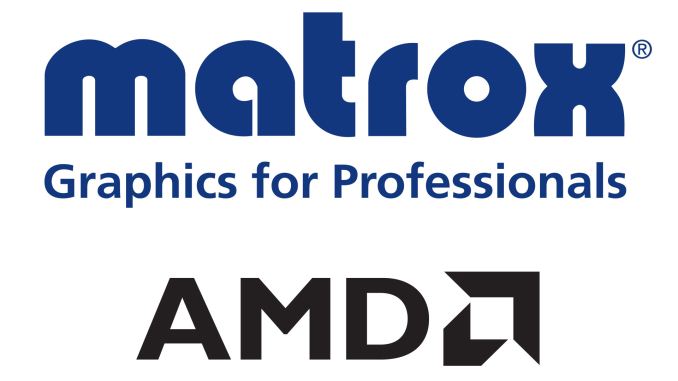



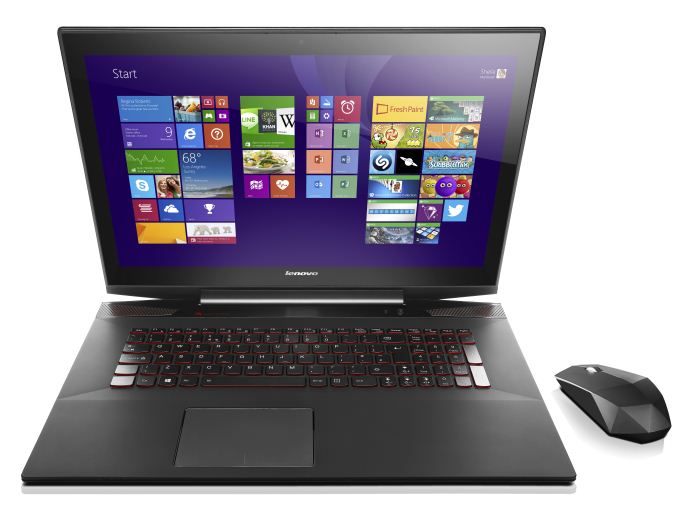
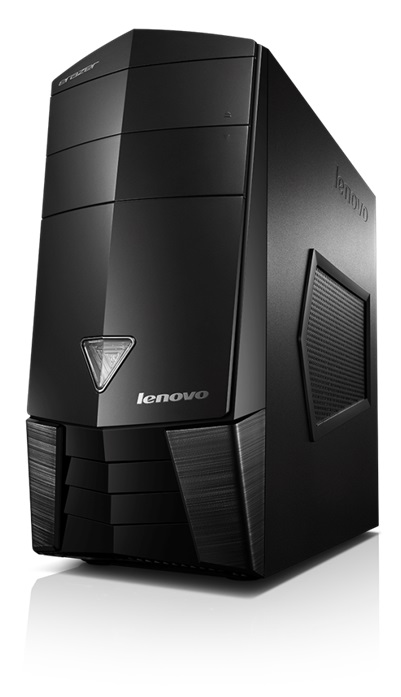
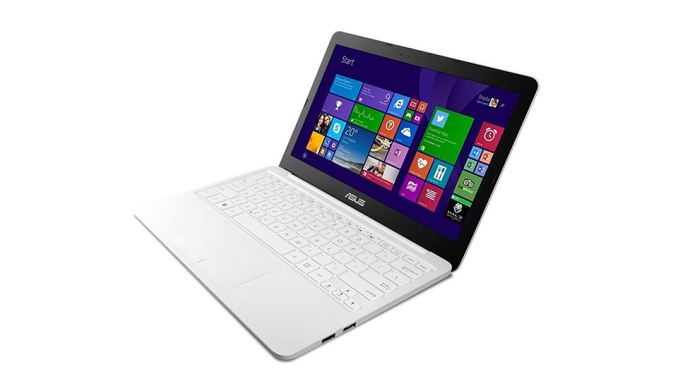
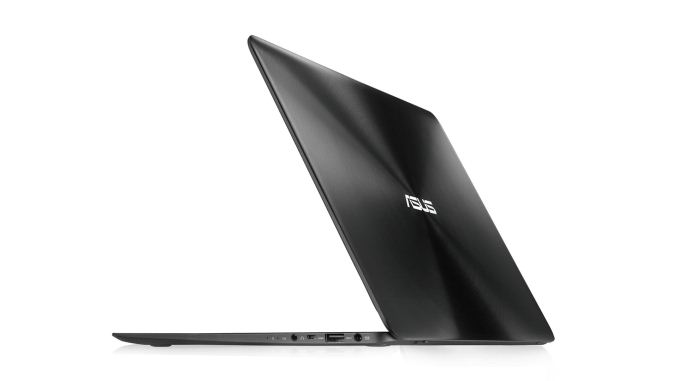
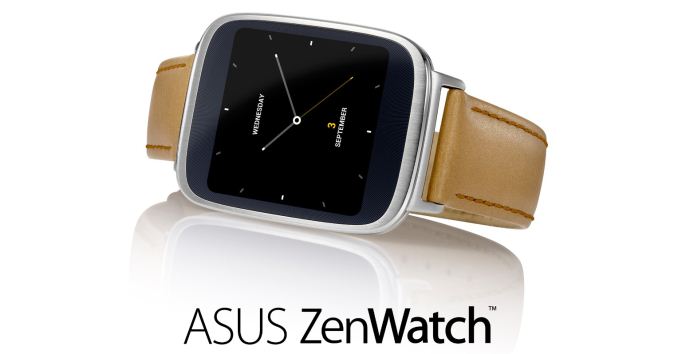
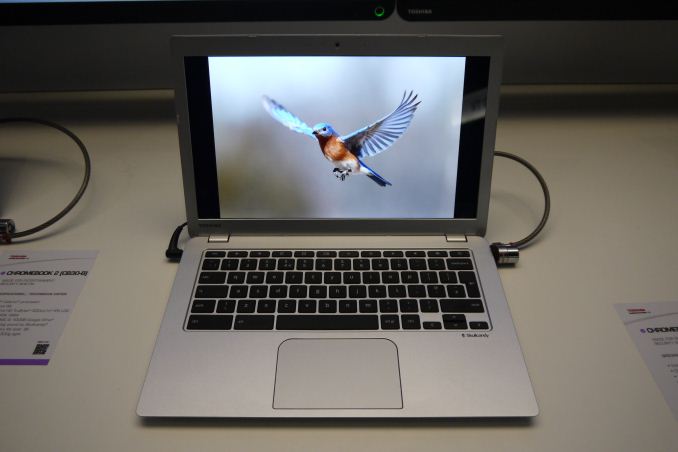







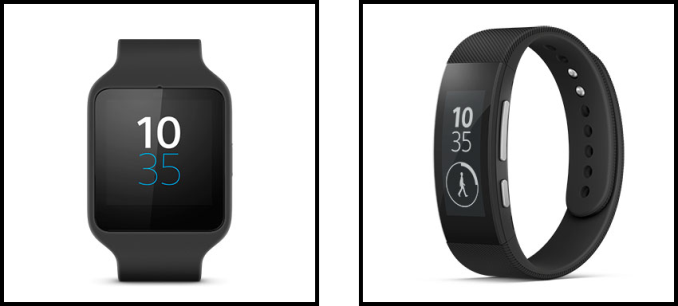


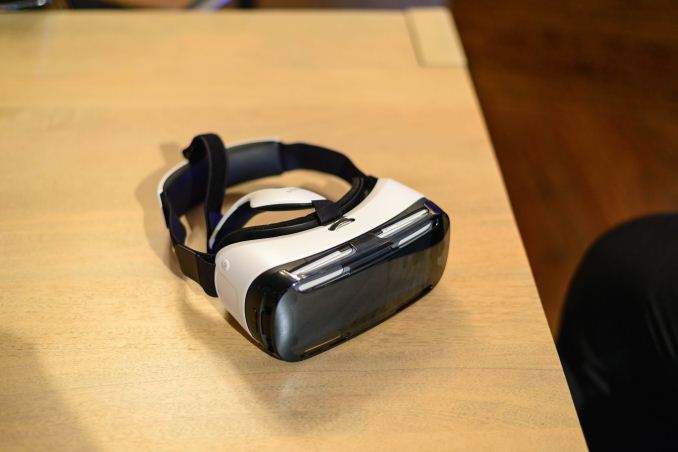

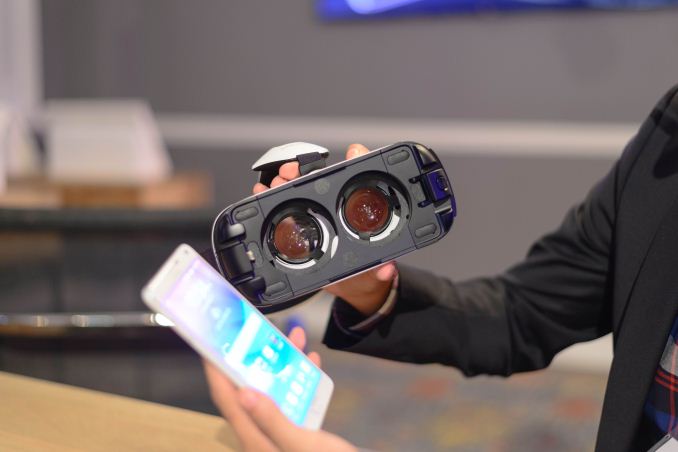
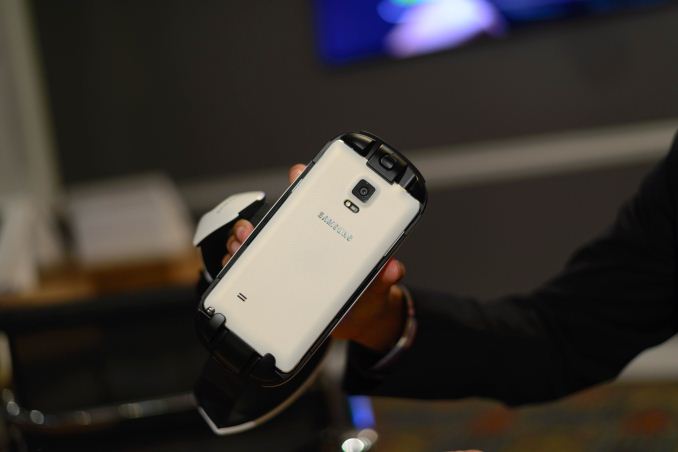

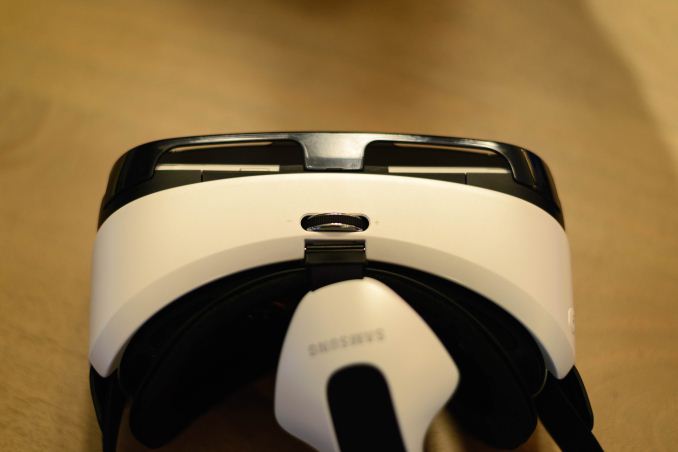
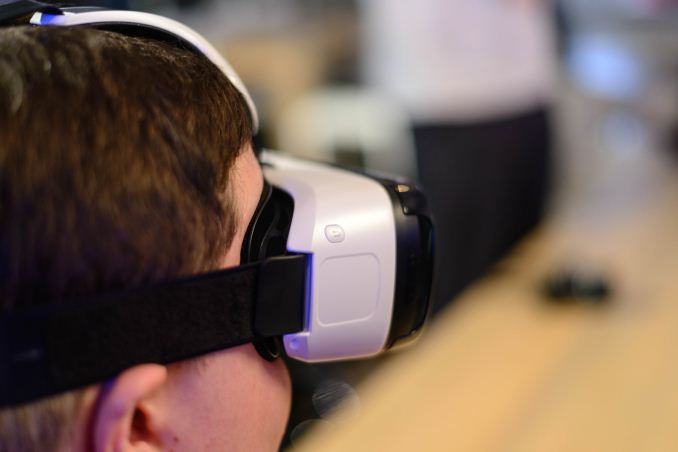
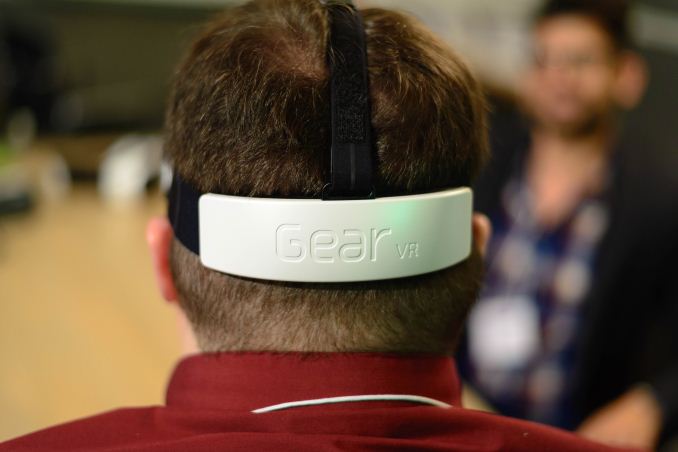
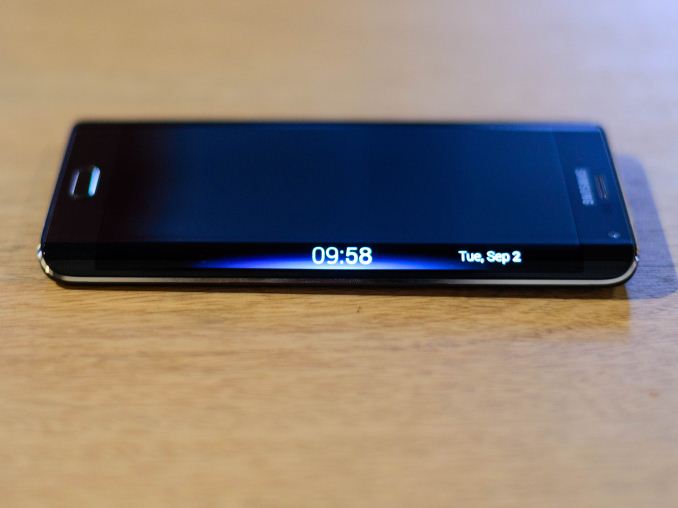
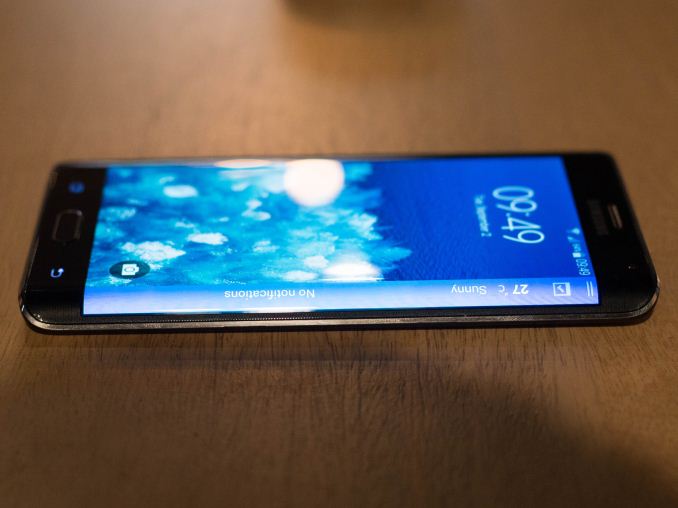
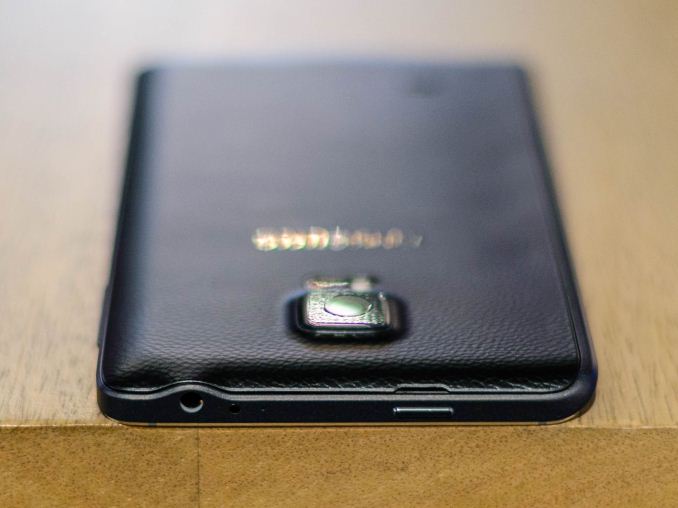
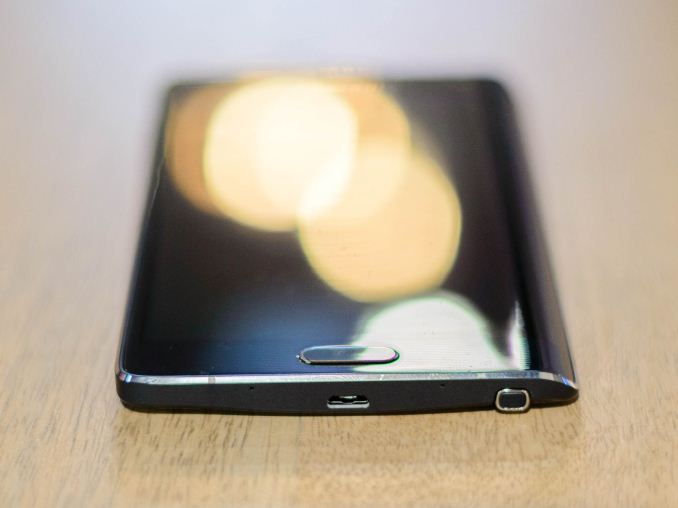

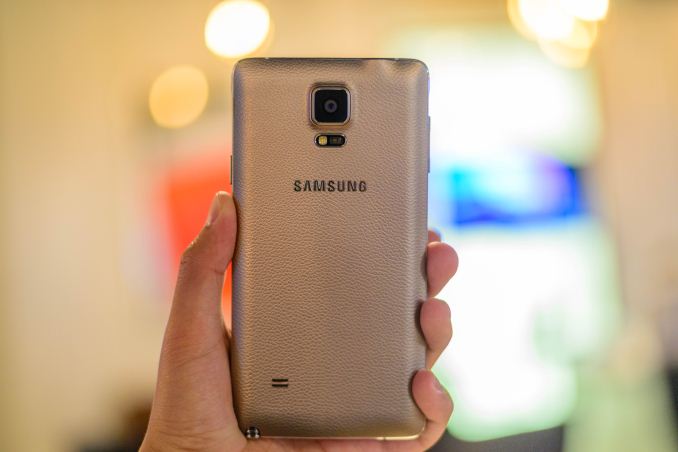
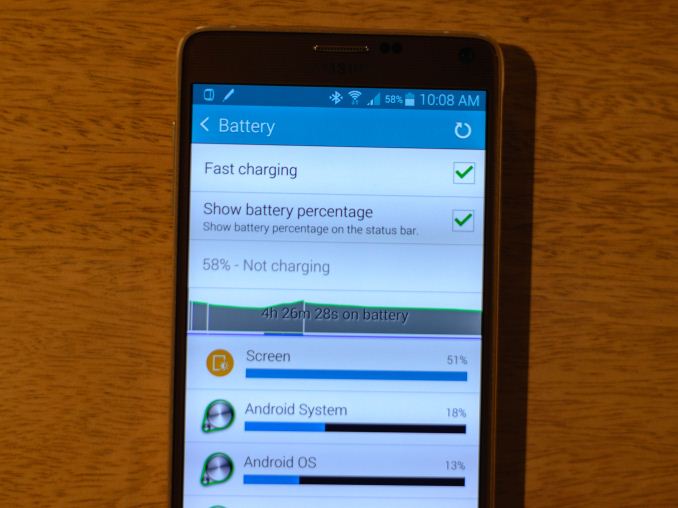
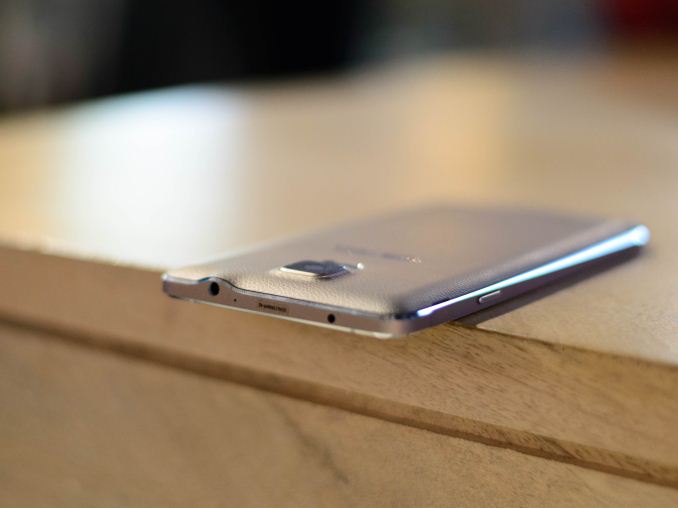
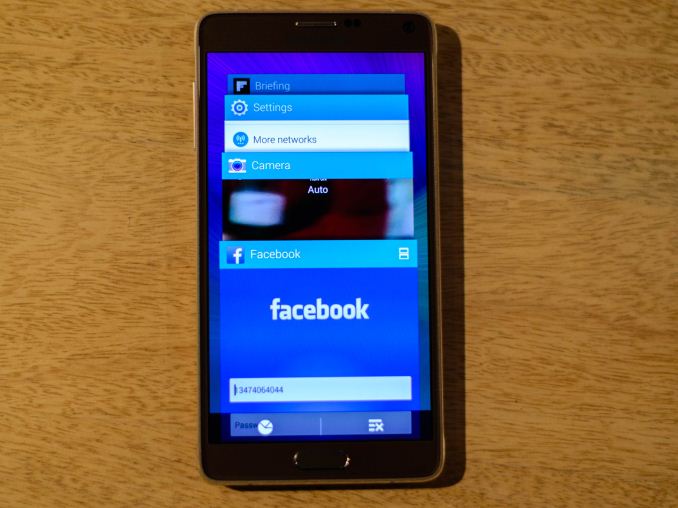
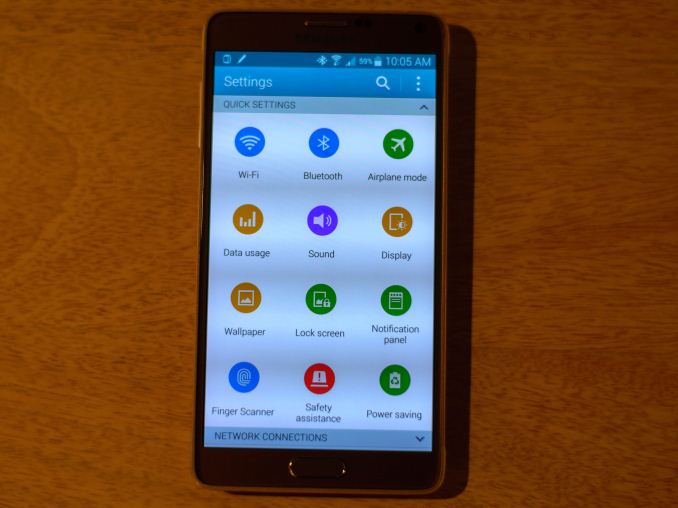
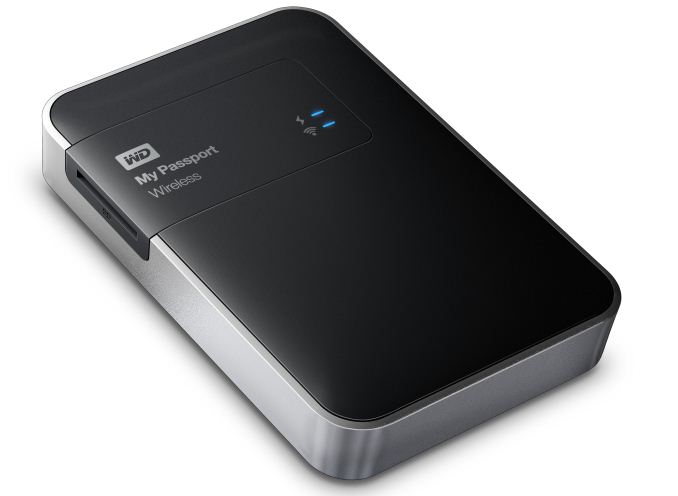
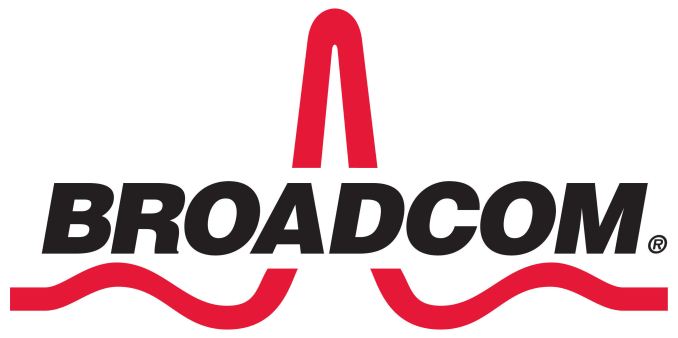
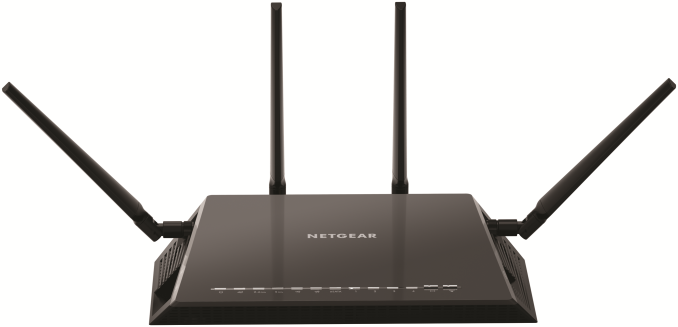



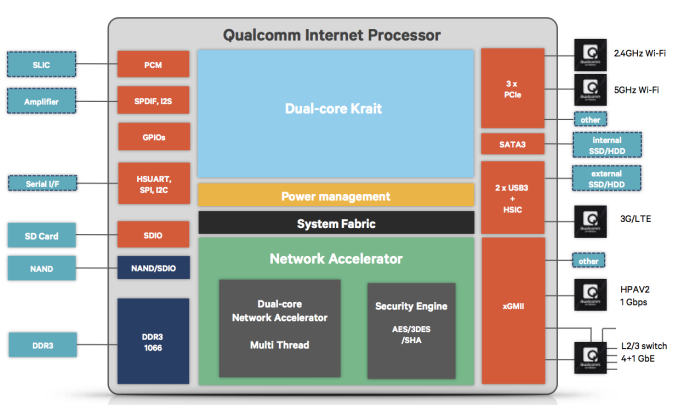
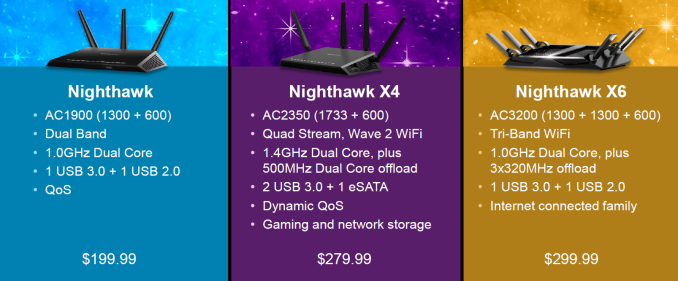
1 comment:
Big Sale Matrox M9188 in UAE, Matrox PCIe x16 in UAE, Multi-Display Graphics Card in UAE
https://pcdubai.com/product/matrox-m9188-pcie-x16-multi-display-graphics-card-m9188-e2048f/
Post a Comment